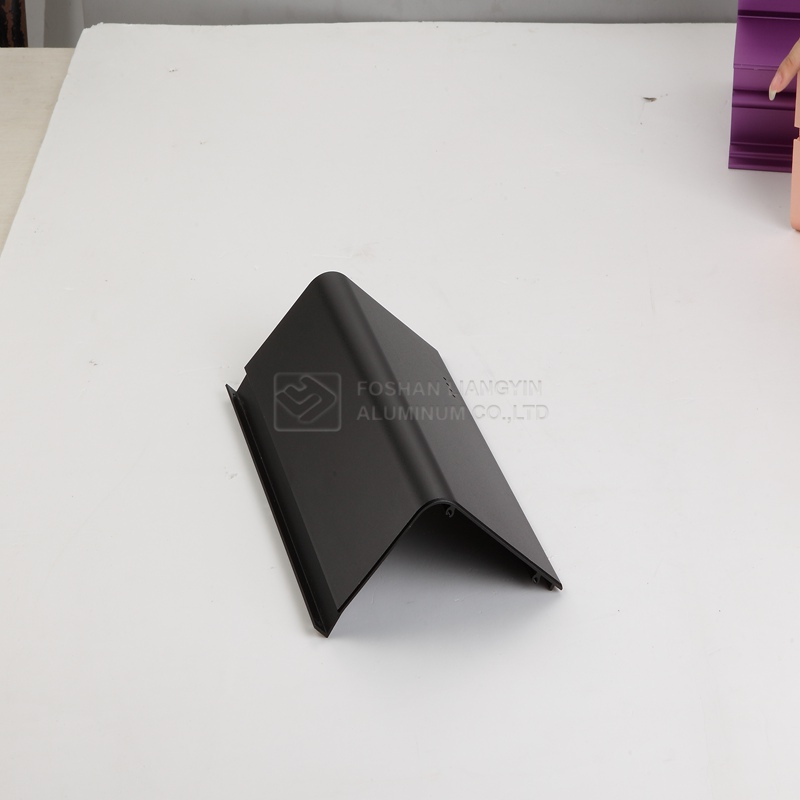Aluminum extrusion technology is to heat aluminum ingots to a high temperature of about 520~540°C, and allow liquid aluminum to flow through an extrusion die with grooves under high pressure to create a preliminary heat sink embryo, which is then processed After cutting, trenching and other processing. Aluminum extrusion technology is easy to implement and the equipment cost is relatively low, which has also made it widely used in the low-end market in previous years. The commonly used aluminum extrusion material is aa6063, which has good thermal conductivity (about 160~180 w/m.k) and processability. However, due to the limitation of the material itself, the ratio of the thickness and length of the heat dissipation fins cannot exceed 1:18, so it is difficult to increase the heat dissipation area in a limited space. Therefore, the heat dissipation effect of aluminum extruded heat sinks is relatively poor, and it is difficult to cope with today's increasing high frequency cpu.
Aluminum die casting technology
In addition to aluminum extrusion technology, another process commonly used to manufacture heat sinks is aluminum die-casting. The aluminum ingot is melted into a liquid state, filled into a metal mold, and directly die-cast using a die-casting machine to form a heat sink. The fins can be made into a variety of three-dimensional shapes by using the injection method. The heat sink can be made into complex shapes according to needs. It can also be used to create a heat sink with a diversion effect according to the fan and airflow direction, and thin and dense fins can be made. To increase the heat dissipation area, it is widely used because of its simple process. The commonly used die-casting aluminum alloy is adc12. Due to its good die-casting formability, it is suitable for thin castings. However, due to poor thermal conductivity (about 96 w/m.k), aa1070 aluminum is now used as the die-casting material in China. The thermal conductivity is as high as about 200 w/m.k and has good heat dissipation effect.
In addition, the main procedure that may be used in the production of aluminum profile radiators is casting. The main implementation methods are:
1. Ingredients: According to the specific alloy grades that need to be produced, calculate the addition amounts of various alloy components and reasonably match various raw materials.
2. Smelting: Add the prepared raw materials into the smelting furnace for melting according to process requirements, and effectively remove impurities and gases in the melt through degassing and slag removal refining methods.
3. Casting: Under certain casting process conditions, the smelted aluminum liquid is cooled and cast into various specifications of round cast rods and aluminum profiles through the deep well casting system, and finally processed into aluminum profile radiators.
The related articles about aluminum profile radiators will be introduced to you today. If you have other aspects that you need to know, you are welcome to call our customer service and we will serve you wholeheartedly.
Flexible process heat sink
Flexible heat sinks are made by first folding copper or aluminum thin plates into integrated fins using a forming machine, then fixing the upper and lower bottom plates with a puncture mold, and then using a high-frequency metal welding machine to weld them into one body with the processed base. Because the process is continuous joining, it is suitable for making heat sinks with a high thickness-to-length ratio, and because the fins are integrally formed, it is conducive to the continuity of heat conduction. The thickness of the fins is only 0.1mm, which can greatly reduce the material requirements and allow for less weight in the heat sink. Get the maximum heat transfer area within. In order to achieve mass production and overcome the interface impedance when joining materials, the upper and lower base plates are fed at the same time in the manufacturing process, and the process is automated and consistent. The upper and lower base plates are joined by high-frequency fusion welding, that is, material fusion is used to prevent the generation of interface impedance to establish high strength. , closely spaced heat sinks. Because the process is continuous, it can be mass-produced, and because the weight is greatly reduced and the efficiency is improved, the heat transfer efficiency can be increased.
Forging process heat sink
The forging process is formed by heating the aluminum block to the yielding point and filling the mold with high pressure. Its advantage is that the fin height can reach more than 50mm and the thickness can be less than 1mm, which can obtain the maximum in the same volume. The heat dissipation area is large, and forging is easy to obtain good dimensional accuracy and surface finish. However, during forging, due to the necking phenomenon during cooling plastic rheology, the heat sink is prone to uneven thickness and height, which in turn affects the heat dissipation efficiency. Because the metal has low plasticity, it is prone to cracking during deformation and has high deformation resistance. , which requires large-ton (more than 500 tons) forging machinery, and the product cost is extremely high because of the high cost of equipment and molds. And due to the high cost of equipment and molds, the cost will be too high unless mass production is carried out.
If you are interest in our Aluminum Extrusion,please contact us

